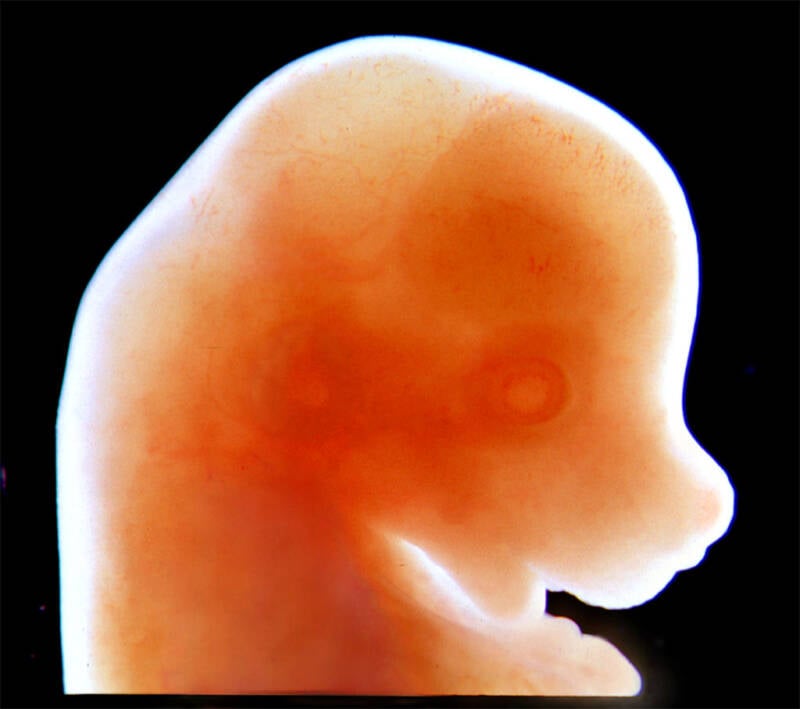Scientists involved in the study will inject human cells into rat and mice embryos. Researchers plan to follow the development of the resulting creatures' organs over the course of two years after the baby hybrids are born.

PixnioThe study will be the first of its kind approved under Japan’s controversial new scientific guidelines.
In a historic first for Japan, its government’s science ministry has granted scientists permission to move forward with research designed to create animal-human hybrids whose organs can be harvested for people to use.
According to Nature, Japanese stem cell scientist Hiromitsu Nakauchi, who leads multiple teams of researchers at the University of Tokyo and Stanford, plans to place human cells inside mouse and rat embryos in order to transplant them into surrogates and thus develop animal-human hybrids with organs that can be transplanted into human patients.
Theoretically, the objective of these controversial experiments is to produce enough human organs to aid those people now on waitlists for donor organs.
Previously, the Japanese government had explicitly banned the creation of animal-huma embryos via guidelines created by their Ministry of Education, Culture, Sports, Science and Technology that prohibited scientists from growing animal embryos containing human cells for more than 14 days. The ministry had also banned the transplant of animal-human embryos into a surrogate uterus.
However, that ban was overturned last year.
Under the updated guidelines, researchers are now allowed to create animal-human embryos to transplant them into surrogate animals and grow them to full term. Nakauchi’s project is the first to be approved under the new rules.
“We don’t expect to create human organs immediately, but this allows us to advance our research based upon the know-how we have gained up to this point,” Nakauchi told the local newspaper Asahi Shimbun. “Finally, we are in a position to start serious studies in this field after 10 years of preparation.”

Needpix
But don’t expect any hybrid creatures to be growing inside Japanese laboratories just yet. The researchers still need to get further government approvals to use these human-induced pluripotent stem cells (known as iPS cells) for their experiments.
Nakauchi indeed clarified that he plans to take the project one step at a time and will not be growing any full-term embryos anytime soon.
“It is good to proceed stepwise with caution, which will make it possible to have a dialogue with the public, which is feeling anxious and has concerns,” science-policy researcher Tetsuya Ishii of Hokkaido University said of Nakauchi’s decision.
For now, Nakauchi said he will grow hybrid mouse embryos until 14.5 days first, which is when the animal’s organs are mostly formed and almost to term. Then, he will conduct the same experiments with rats, which have a near-full-term embryo at 15.5 days.
Later, Nakauchi plans to expand his research subjects and apply for government approval to grow hybrid embryos in pigs for up to 70 days.

Wikimedia CommonsThe research will use embryos from rodents like mice.
But once they begin the full-term growth, the process is quite simple. The first human organ that researchers in the project are trying to produce is the pancreas. Researchers will create fertilized rat and mice eggs with manipulated genes such that they do not have the ability to make pancreases. Then, the researchers will inject human iPS cells into those fertilized eggs to create the animal-human embryos.
The next step is to transplant the embryos into the wombs of these rodents, either rats or mice. Pancreases will begin to grow inside the bodies of the infant rodents which will be monitored over two years to see how the organs continue to develop after the rodent babies are born.
While the objective of this research is to supply more organs that can be transplanted into humans in need, there are obvious possible complications that need to be considered with these kinds of experiments.
Opponents of the project are concerned that the human cells could stray beyond the targeted organs into other areas of the animal which would effectively create something that is part animal, part human in a way that scientists hadn’t anticipated.
Researchers in the study will, of course, take precautions. According to the report by Asahi Shimbun, if scientists detect that human cells exceed more than 30 percent of the brains of the rodent embryos, they will suspend the experiment.
Nevertheless, some in the scientific community are not convinced and are even questioning the motives behind the project.
“If the goal of such studies is to discover a therapeutic application for humans, experiments on rats and mice are unlikely to produce a useful result because the size of the organ will not be sufficient and the result will be a far cry from humans anatomically,” said Jiro Nudeshima, a life science specialist who co-heads a civic group focused on ethical research.
Nudeshima called the study’s premise “problematic, both ethically and from a safety aspect.”
However, animal-human hybrid embryos are nothing new in certain scientific circles. They have been grown in the U.S. and other countries yet never been brought to full term because most countries do not allow it. In the U.S., for example, the National Institutes of Health has had a moratorium on funding such experiments since 2015.
But now that Japan is paving the way for the international research community to conduct these controversial experiments, the world will be watching.
Next, learn how scientists produced “printable” human skin using a 3D bioprinter. Then, read the horrifying history of how scientist Eugene Saenger used African-Americans as guinea pigs — and the U.S. government funded it.





